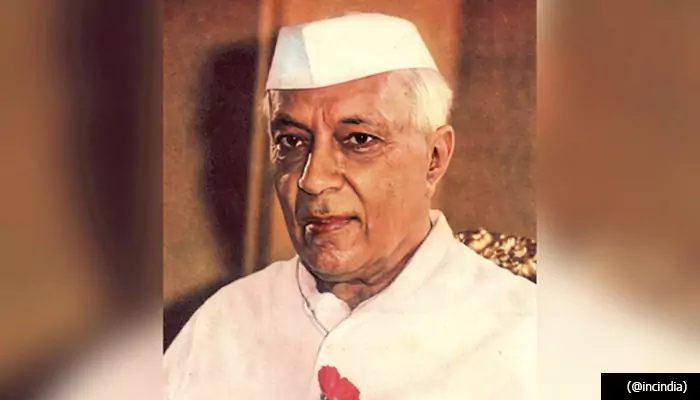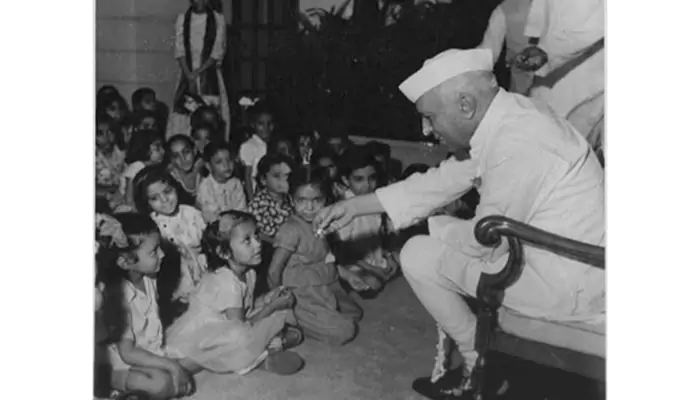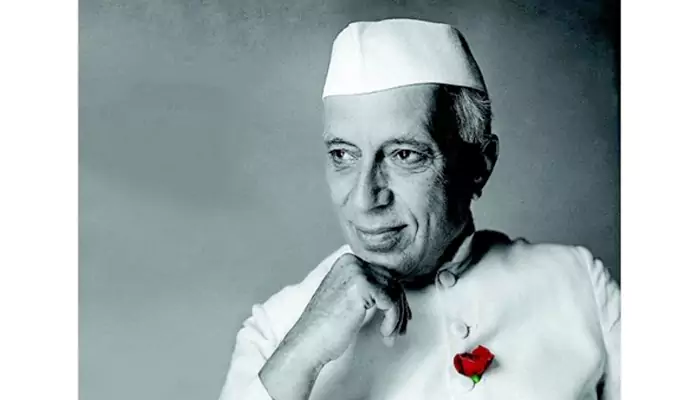Jawaharlal Nehru's Birth Anniversary: Why Did He Always Wear a Red Rose on His Coat?
- Devyani
- 3 weeks ago
- 4 minutes read

An everyday ritual that said more than words ever could - why Nehru's red rose became inseparable from his legacy.
Jawaharlal Nehru's red rose was far more than a charming accessory - each bloom symbolized a mix of personal love and public identity. More than just a flower pinned to his coat, the rose became a fragrant tribute to his late wife and a tender emblem of the affection he held for the nation’s children. It wasn’t fashion, it was a daily act of remembrance.
A Token from the Heart - or Just a Pretty Flower?
Some say he picked up the habit casually, tossing a red rose into his achkan lapel without much fuss. Nehru himself once shrugged off questions about it as “nothing special,” claiming he simply liked the deep red, rejecting anything pale or faint. But peel back a few layers, and the narrative blooms heartfelt.

Jawaharlal Nehru with his wife Kamala Nehru
The most widely accepted truth? That rose was a daily tribute to Kamala Nehru, his beloved wife who passed away in 1936 after a long illness. Pinning a fresh red rose on his coat was a quiet act of remembrance - a reflection of enduring love that refused to fade with time.
Why a Rose? Why Red?
Roses have long symbolized love, passion, and memory across cultures - but the red rose specifically is the language of deep affection and respect. For Nehru, the gesture was equal parts intimate and public.

Chacha Nehru has always been children's favourite. The Prime Minister at Jerbai Wadia Children’s Hospital Parel. (Hindustan Times)
Interestingly, this simple flower became more than personal - it morphed into a broader symbol of Nehru’s warmth and approachability, especially to children, whom he adored deeply. The image of “Chacha Nehru” with his cherubic smile and ever-present red rose filtered into the collective imagination of a young nation, symbolizing a nurturing, fatherly figure dedicated to the country's future.
Personal Quirks or Political Symbolism?
Political commentators and historians have also mused about the red rose as a subtle nod to Nehru’s socialist ideals. The red rose, often embraced internationally as a symbol of socialism and labor rights, lined neatly with Nehru's commitment to social justice and equality. The man who founded modern, secular India had many layers - one of them possibly expressed, unconsciously or deliberately, in his floral accessory.

And, not to forget, Nehru’s red rose eventually became part of a political identity. Political slogans like “Lal Gulab Zindabad” echoed during Indira Gandhi’s era, cementing the rose’s place beyond mere ornamentation.
The Daily Ritual that Became Legendary
Stories from those around Nehru paint a charming picture of family rituals intertwined with the rose. For instance, Indira Gandhi reportedly took on the task of selecting a fresh rose each day from their garden, diligently presenting it to her father. This small act was a tender thread in the fabric of their close-knit family life amidst the whirlwind of public responsibilities.

Jawaharlal Nehru and Indira Gandhi
(The Caravan)
There are even anecdotes bursting with the charm of Nehru’s unpretentiousness - like the time when, despite offers of carefully preserved flowers, he simply used any fresh rose handy, dismissing fussiness in favor of simplicity.
In a world fixated on grand gestures and loud declarations, Nehru’s rose was a subtle beacon of vulnerability and remembrance. His red rose whispers stories of affection, resilience, and the gentle reminder that behind the iron will of a nation-builder was a man who valued tenderness.
So, on this birth anniversary, as India honors the memory of its first Prime Minister, perhaps we pause for a moment - not just to reflect on his towering legacy, but on the quiet symbol of love he carried on his chest like a routine.












